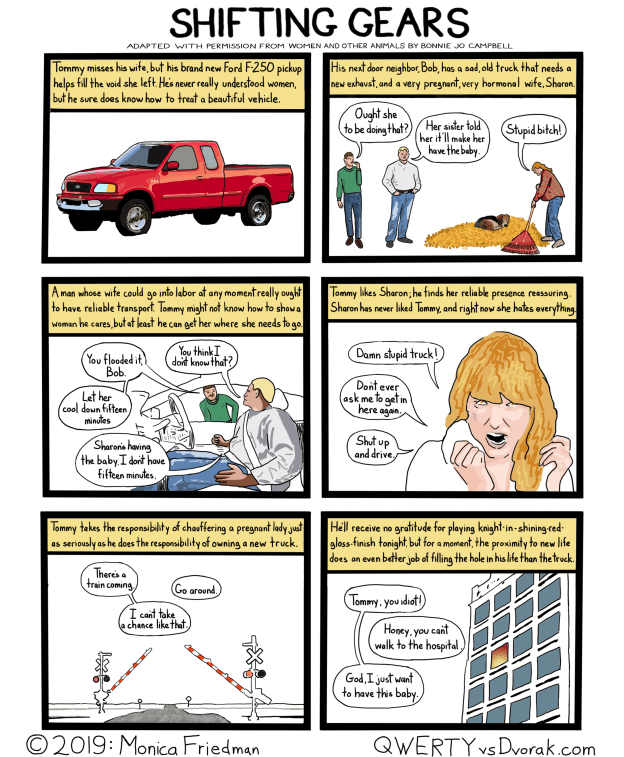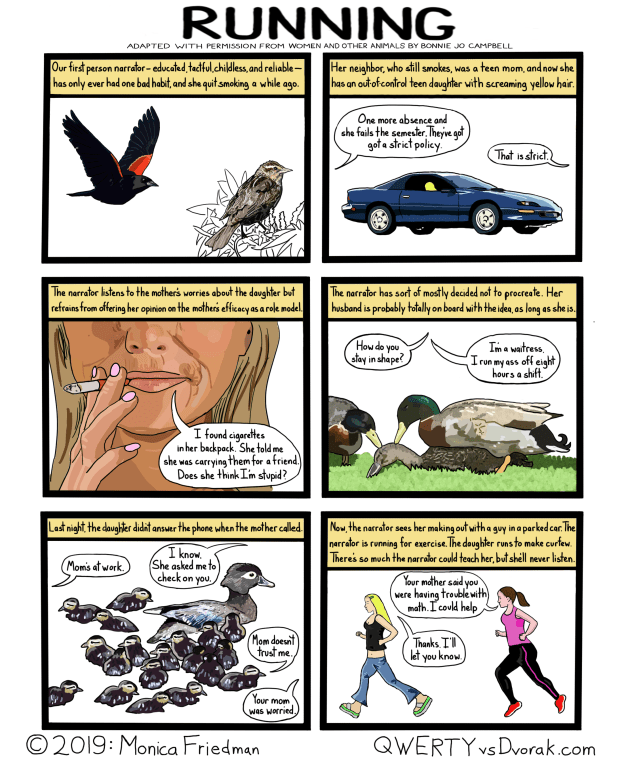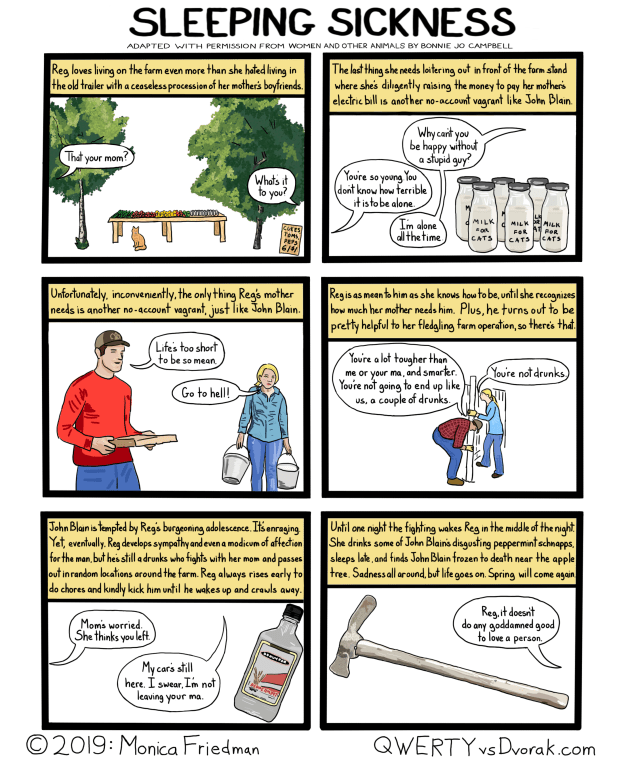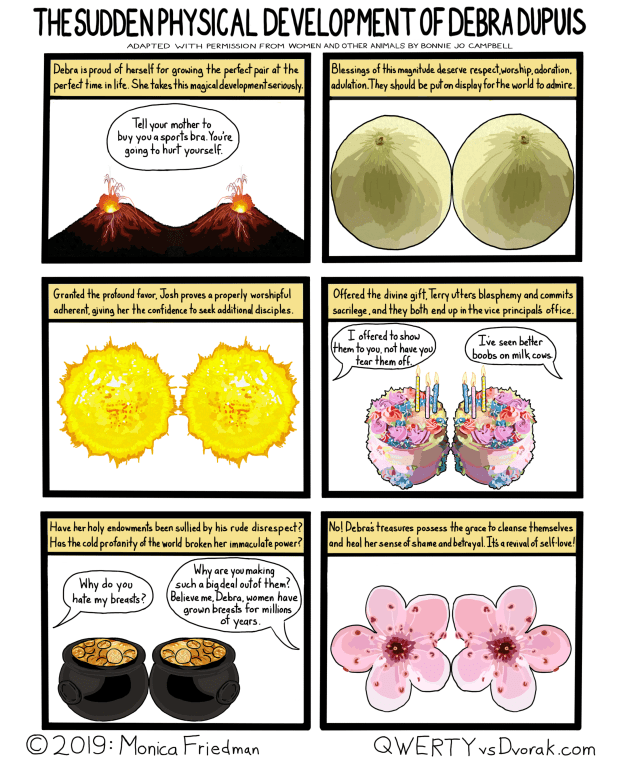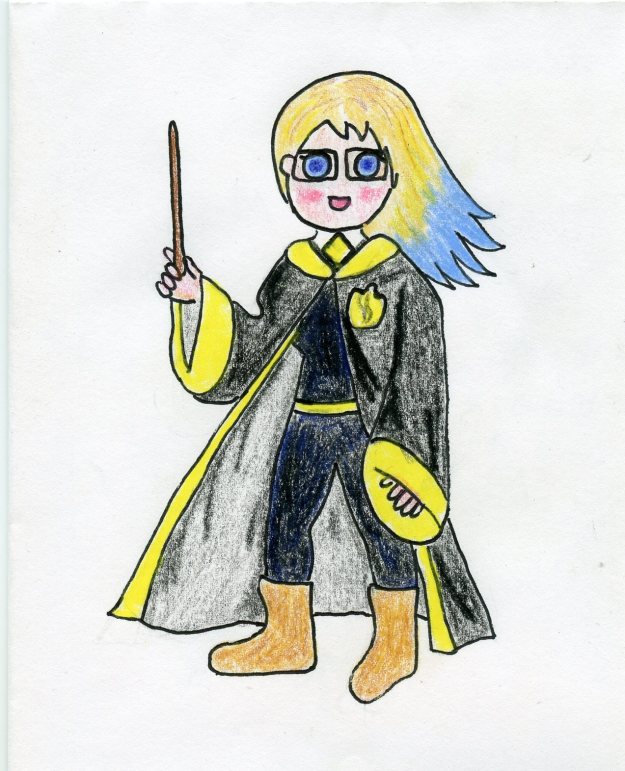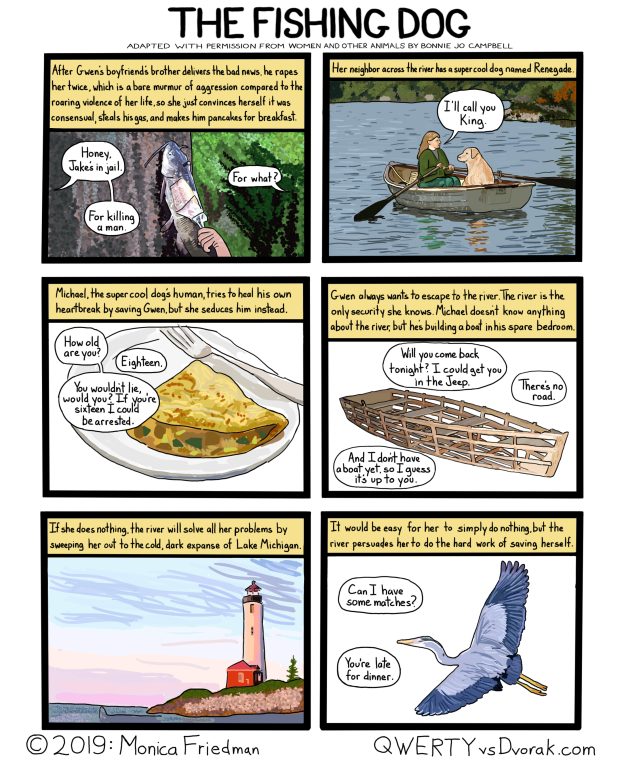
That is a very good dog.
Now we’re in pure Bonnie Jo Campbell territory. The river. The land. Various animals. The semi-feral girl. The boat. The casual sexual violence. I don’t know why I remember this book as being less rape-y than the others, because it’s a decent amount of nonconsensual sex. Gwen acts like it’s no big deal when her boyfriend’s married, middle aged brother forces her, but it’s forced nonetheless. I’m not even 100% convinced that the sex was purely consensual on Michael’s end. Yeah, he turns toward her, but she kind of puts him on the spot. He lets us know that fooling around with semi-feral girls is not his typical MO.
Gwen is such an interesting character, a blueprint for Once upon a River’s Margo Crane, or rather, this story is one of the short fictions that later became the novel, along with “Family Reunion,” where Margo’s younger incarnation is called Marylou. Gwen is so hurt that she doesn’t even know she’s hurt. She’s run away from home, and her boyfriend, Jake, doesn’t seem like anything close to a decent guy. She’s intent on survival, and she’s good at it, but she’s not exactly thriving. In “The Fishing Dog” you think that Michael, apparently the first decent guy she’s known, could be the antidote to Gwen’s misfortune, but in the novel she can’t bring herself to stay with him. Then the cycle comes full circle in Q Road (written and published before Once upon a River, but set years afterward) when Margo’s semi-feral teenage daughter, Rachel, does consent to marry the decent older guy, and balance is restored to the force. Er, land.
Regarding the illustrations, it was not easy to find a reference image of someone using pliers to pull the skin off a catfish that’s been nailed to a tree. I watched a very useful YouTube video on the subject to get it right. It’s been said that you should never read the comments on YouTube. About 10% of them said things like, “This is how we cleaned catfish when I was a kid,” and the other 90% insisted that no sane human would ever skin a catfish like this and the guy who made the video was mentally deficient and probably a lunatic. Frankly, it really seems like Gwen knows what she’s doing, at least when it comes to catfish.
Now I want some fried catfish.
